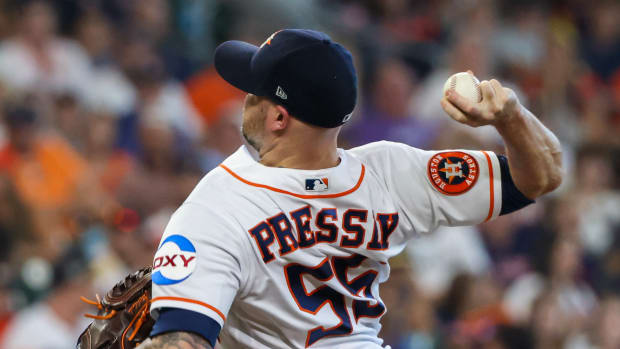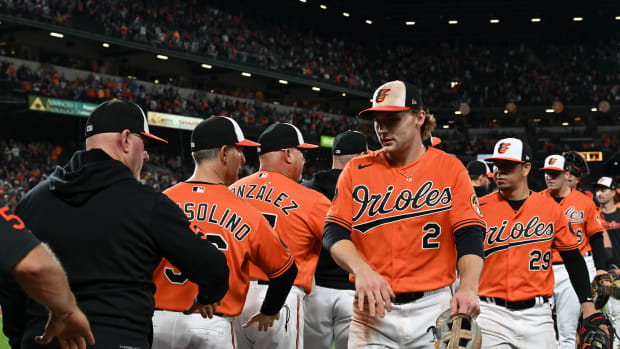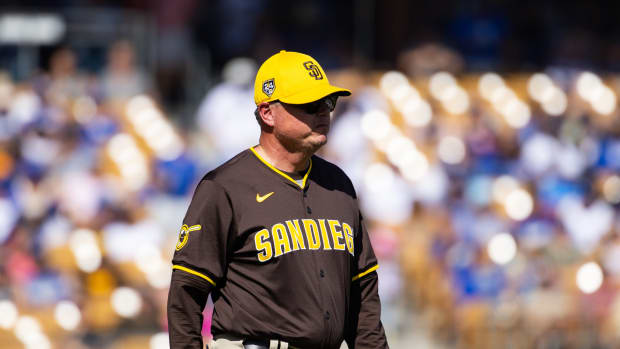Speak Now: MLB's Quiet Free Agency Has Made Players Louder Than Ever
With free agency plodding along, MLB’s hot stove needed an alternative fuel to stay warm this winter. Its replacement? A heated discussion about the game’s labor environment. The kindling should be familiar by now: For a second consecutive year, top free agents remain unsigned in February with under a month before players report to spring training. Among the players who have signed, few have inked multi-year contracts. The median player salary has dropped over the last few seasons despite record league revenue.
There’s been ample debate over whether the system is broken or not, but it’s hard to deny that it is very different. Much of the resulting conversation remains on what players might have lost over the last few years—namely, consistent expectations for a compensation system that has long been built on free agency. But there’s also something that they’ve gained, however different in scale and scope—the ability to drive public conversation about the situation on social media, which has the potential to make this far different from baseball’s past labor conflicts.
Over the past month, a slew of players have spoken out about free agency on Twitter and Instagram. This may seem unremarkable, but compare it to the previous public discourse on baseball’s labor issues and it seems noteworthy, maybe even a bit radical.
VERDUCCI: Is a Universal DH coming in 2019?
“It’s a really fundamental change in labor relations in professional sports,” says Doug Allen, professor of the practice in labor and employment relations at Penn State, who previously served as assistant executive director of the NFL Players’ Association for 25 years. “It’s just a much more powerful tool for the unions and their members today than it was even six or eight years ago.”
Public conversations on labor have traditionally been dictated by the league and team owners, which have had deeper resources and better media access. The opportunities for players to speak about these issues were limited, especially if they sought to speak candidly. Unsurprisingly, fan opinion has typically leaned more toward the owners.
“Historically, professional athletes, when they’ve engaged in labor activities, it hasn’t resulted in a lot of public approval,” says Mark Conrad, professor and director of the sports business concentration at Fordham University.
The players’ ability to open up discourse—to point out when a reported contract offer is remarkably low or note that every team has the financial ability to take on a monster deal or echo a call for a free agent to be signed—can shift that window, even if action may not be imminent. MLB’s collective bargaining agreement does not expire until 2021, meaning there are years before a potential work stoppage. Historically, serious public discussion didn’t begin until a stoppage appeared viable. That’s not the case anymore. Now, players are able to draw fans’ attention to these topics on a different timeline—as they’re seeing concerns unfold, not after they’ve already laid flat for years. There was, obviously, nothing of the sort in the years leading up to MLB’s last strike in 1994. But social media has evolved so rapidly that the current environment is different even than it was in recent labor conflicts in the other major professional sports: 2011’s NBA and NFL lockouts, and 2012’s NHL lockout.
“I want to help grow the game, and I worry that the path we’re on right now, it just isn’t sustainable,” says Washington Nationals reliever Sean Doolittle, who’s been vocal about thesesubjectsonTwitter. “I think it’s really important for us to be able to use the time that we have leading up to the CBA—to continue to voice some of the concerns that we have about the direction that the game’s going, to continue to use it to advocate for changes that we think would improve the game and leave it in a better spot, and to continue to use social media to hear from fans and be able to have those constructive dialogues.”
WERTHEIM: Why Nick Francona Blackballed Himself From the Family Business
The “social” here is just as important as the “media.” Players are publicly interacting and showing solidarity with one another, and, perhaps more crucially, they’re creating a back-and-forth with fans—including those who are skeptical of their arguments.
“We are less than a month from the start of spring and once again some of our game’s bigger stars remain unsigned. Such a shame,” Evan Longoria posted on Instagram on January 18, with a photo collage of free agents like Bryce Harper and Manny Machado. “Bottom line, fans should want the best players and product on the field for their team. And as players we need to stand strong for what we believe we are worth and continue to fight for the rights we have fought for time and time again.” (New York Yankees outfielder Aaron Judge responded with “OK” hand sign emojis; San Diego Padres first baseman Eric Hosmer chimed in with “Preach Longo!”; Cleveland Indians second baseman Jason Kipnis pressed “like.”)
When one commenter tried to argue that his expensive tickets paid for players’ salaries, in stepped free agent Logan Morrison: “Since teams have stopped paying as much for free agents, have your ticket prices gone down? But your tax dollars are paying for that gorgeous stadium. You should want the best players on the field at all times.
It opens up a two-way street: Fans hear directly from players, and vice versa. Doolittle noted a recent conversation of his Twitter, which revolved around fan satisfaction but didn’t involve any fears about pace of play or handwringing over defensive shifts. Instead, he says, people discussed the cost of going to a game and their desire for competitive teams and a craving to connect with players.
“It’s not just about paying players more. That’s one thing that grabs headlines, for sure, but we want to make sure that the game ends up in a better place, and we think it’s all tied together,” Doolittle says. “If fan interest starts to wane, this can kind of seem like a house of cards. If we’re not trying to grow the game and continue to have fans interested and excited about Opening Day, counting down until the next time they can go to the ballpark to watch their team, or renewing their subscription to watch their team play online—that’s what we need to be focused on, and social media can help us hear those fans and fit that into our message.”


































